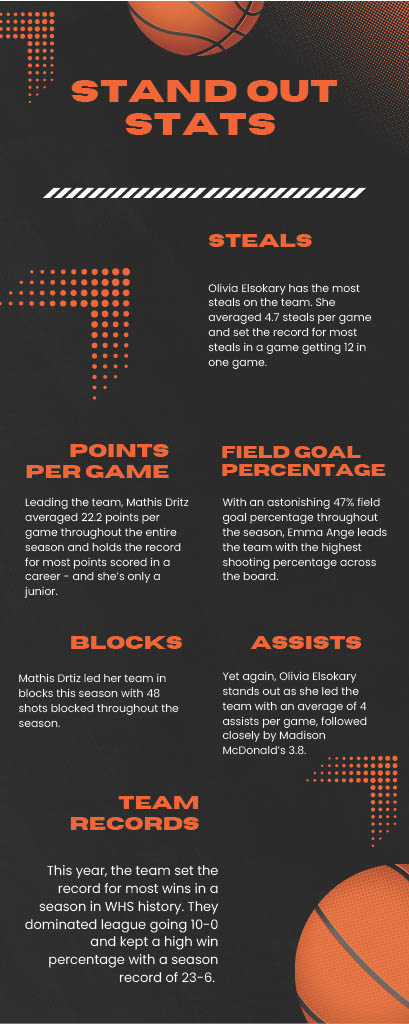Pumpkins sit on porches, cotton spider webs hang in doorways, plastic tombstones cover the lawn and orange lights adorn roofs. As Halloween creeps closer, one could be surprised to learn that it is not a holiday born for mass candy sales, but instead, it is a holiday rich in history. Stemming from the ancient Celtic festival of Samhain, the celebration has evolved into the beloved traditions popular today. For the Celts, this time marked the end of summer and the transition into the cold months. Acting as one of four fire festivals, Samhain was also considered one of the two times during the year when the veil between the earthly and supernatural world was at its thinnest. The veil thins again during the festival of Beltane on May 1 this upcoming year, according to history.com.
“It all originates from the Celtic holiday, Samhain,” said Brian Rocinante, WHS AP US History, AP European history and honors Comparative Religions teacher. “If you look at Samhain, it has all the makings of Halloween. It’s a harvest ceremony. You dress up to disguise yourself from malevolent spirits, you can do tricks to trick the spirits [and] you can do invitations to bring in positive spirits. It’s everything; it is Halloween.”
When it came to Celtic culture, which is mostly found in Ireland and Scotland, ancient Pagan religions dominated. This belief system revolving around a personal connection with nature includes a cycle of festivals called the Wheel of the Year. This cycle acknowledges eight sabbaths which fall on solstices, equinoxes and the half points between them. Samhain sits between the fall equinox and winter solstice, according to outdoorapothecary.com. Over time, Samhain eventually became the Halloween widely celebrated today. Things like the colors, bonfires, Jack–o–lanterns and animals associated with Samhain lost their spiritual meaning through the church and became pure decoration. The original themes of this holiday disappeared by the time it got popular in America.
“On past Halloweens, I mainly [went] trick–or–treating with friends, usually around Lang Ranch and then [I would go] back to their house and have candy,” said Aaron Smith ‘26.
It was with Christian missionaries and Roman Catholic influence in Gaelic areas that many Celtic holidays evolved. With Christianity moving in to alter the world religiously and culturally, they found an effective tactic.
“The first thing I understand when it came to the Christians [is that they] were great adapters,” said Rocinante. “We know the Christians basically kind of came in and more or less conquered the world, and one of the ways they were able to do that was being kind of cool to existing cultures.”
In the 400 years that the Roman Empire ruled over the Celts, traditions and customs from the two cultures meshed together. The Christians were able to ease the transition from Paganism to Christianity by keeping some aspects of their traditions and replacing others with Christian ideologies, according to history.com.
“[The Roman Empire was] able to influence [the Celts] with a coercive Roman–Catholic angle, [but they couldn’t] crush the Celts,” said Rocinante. “[The Celts are] like ‘okay we get to keep our traditions,’ and then the Catholics come in and are like ‘yeah, but that’s All Hallow’s Eve which means it’s the day before the real, important day: Nov. 1 which is All Saints day.’”
The Celts used to look at this holiday as the mark of the new year where they would perform divination to ask spirits about what was to come. Things like jack–o–lanterns, originally made from vegetables like turnips, were used to protect from evil spirits which would roam closer on this night, according to Little Book of Halloween by Mickie Mueller.
Halloween survives in part due to the immigration from Celtic areas during the 1600s under the Stuart monarchy. The king during this time, James I, used his belief in witches and demons as an oppressive tool against the Irish, causing many to emigrate, according to Rocinante.
The “melting pot” that is America allowed the Celts to share their culture and embed it into America’s so much that their traditions are not recognized or acknowledged as being separate or coming from somewhere else.
“I honestly have no idea where Halloween originated or its history,” said Smith. “All I know is what it means in America.”
When it comes to the history of holidays like Halloween, it's not common knowledge. The Romans were trying to erase Celtic culture, and they were not ineffective in their efforts, as seen through this lack of awareness. The Celts were under British rule for over 700 years until their struggle ended with the gaining of independence in 1922, according to irishtimes.com.
“If Samhain is Celtic and Celtic is Irish and Irish is overwhelmingly Gaelic, then we have to remember that just because the Irish were white doesn’t mean they have ever actually been a prominent civilization. They have always been under the boot of the British, and if anybody should empathize with somebody under the boot of the British, [it] is Americans,” stated Rocinante. “I think sometimes the culture’s important, but I do think there’s an invisible line where your adherence to the context loses sight of the intention. And the intention of Halloween is mischief and fun.”



























